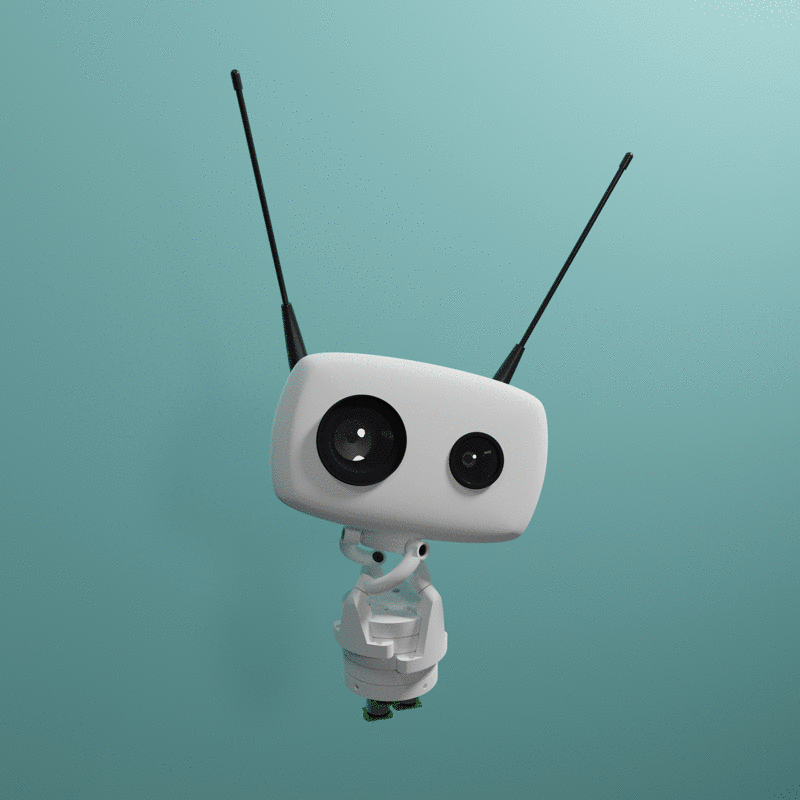Instantiate your robot
The first step is to “instantiate” your robot. What we mean here, is that we will look for the different parts of your robot (connected via USBs on the Raspberry-Pi). We will identify them and check if all modules are connected.
We will also launch the synchronisation between the Raspberry-Pi and the different parts of your robot. The sensors value read from the robot will automatically be updated in your Python object. Similarly you will send command to your Robot effector hardware by simply affecting Python variables.
Which parts are present on my Reachy?
Reachy is built around the concept of modular parts. A Reachy can be composed of:
- a trunk (with all electronics and power supply)
- one arm (left or right) or both with different kind of end-effectors
- a head

So, to instantiate your robot we have to specify which parts you want to use. If you are using a “full” Reachy, ie with both arm equipped with force gripper, and a head; you can run the following Python code on your Raspberry-Pi:
from reachy import Reachy, parts
reachy = Reachy(
left_arm=parts.LeftArm(
io='/dev/ttyUSB*',
hand='force_gripper',
),
right_arm=parts.RightArm(
io='/dev/ttyUSB*',
hand='force_gripper',
),
head=parts.Head(
io='/dev/ttyUSB*',
),
)
And if you have only the right arm and the head:
from reachy import Reachy, parts
reachy = Reachy(
right_arm=parts.RightArm(
io='/dev/ttyUSB*',
hand='force_gripper',
),
head=parts.Head(
io='/dev/ttyUSB*',
),
)
If you don't see any error, good news, you are now connected to your Robot and all the parts have been found! 🎉 🎉 🎉
If it didn't work, check the FAQ or the forum! Your problem is most likely already describe there.
Going deeper: the arm part
Let's dive a bit into the details of the code above.
from reachy import Reachy, parts
Our API is available through the reachy Python module. This is the main entry point for controlling your robot.
right_arm=parts.RightArm(
io='/dev/ttyUSB*',
hand='force_gripper',
),
Here, we specify that we want to add a Right Arm part and it should be found on a USB serial port of type “/dev/ttyUSB*". This is the standard name for the serial port on a Linux system. On other OS the name may differ (e.g. COM* on Windows).
Then, we specify which types of hand are attached to the arm. In our cases we set it to “force_gripper”.
Going deeper: the head part
head=parts.Head(
io='/dev/ttyUSB*',
),
Similarly to the arm, we define the USB port on which we should find the part “/dev/ttyUSB*".
Reachy: putting everything together
The Reachy object is mainly a container to regroup the different parts. It also provides you higher level methods, for instance to program a complex motion happening on multiple parts at the same time.
reachy = Reachy(
left_arm=...,
right_arm=...,
head=...,
)
Reachy's modularity: based on Luos technology
To permit the parts system in Reachy, we are relying on the Luos technology. This modular system is based around the concept of using a tiny electronic Luos board for each sensors or effectors in your robot. They can be daisy chained and are automatically detected and recognized.
Those modules are exposed to the Raspberry-Pi using a Luos gate that communicates via USB-serial interface.
Each part is composed of several Luos modules:
- Arm
- a dynamixel module to communicate with the motors
- a force sensor module for the gripper
- a gate to communicate with the Raspberry-Pi
- Head
- three DC motor controllers for Orbita
- a dynamixel module for the antennas
- a gate to communicate with the Raspberry-Pi